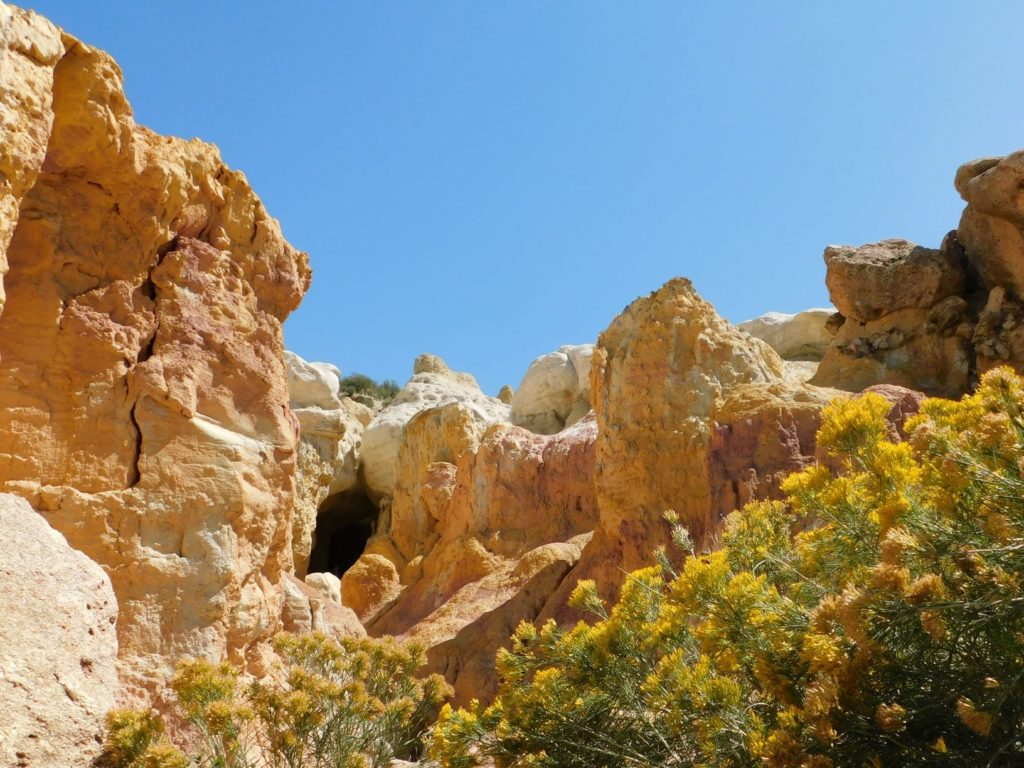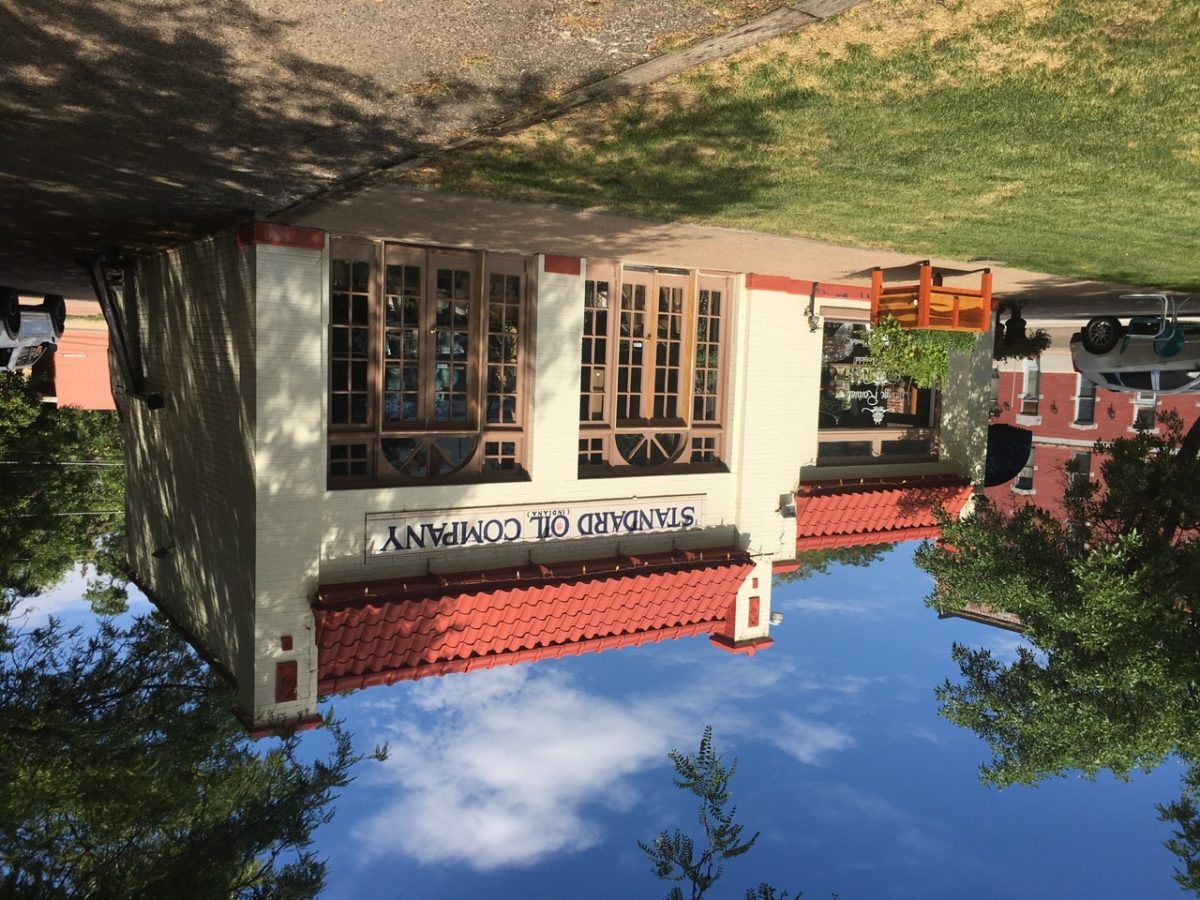Ceramic art by Maynard Tischler on display in the Kirkland Museum of Fine & Decorative Art (Denver, Colorado).
Tag: Colorado
Manitou’s Springs
Just up the hill from Colorado Springs is Manitou Springs, which was built up around a series of natural mineral springs beginning in 1872. Eight free-flowing fountains are scattered around the town now. Most of the city is included in the Manitou Springs Historic District.




Repurposed Standard Oil Gas Station in Cañon City
This former Standard Oil gas station built around 1930 in Cañon City, Colorado is currently occupied by an antique store. A 2008 National Park Service Preservation Brief notes that beginning in the 1920s, gas companies began designing gas stations to look more like residential buildings to help them blend into their surrounding neighborhoods.
The move toward the house-type station was also a sign of growing competition within the oil industry as businesses worked to garner customer trust and loyalty. Companies developed distinctive brands and signature building forms. Pure Oil, for example was well-known for its English Cottage stations, while Standard Oil favored Colonial Revival designs. The effort to develop iconic signage and stations foreshadowed all-encompassing branding campaigns that dominated gas station design later in the century.
Chad Randl, The Preservation and Reuse of Historic Gas Stations. Preservation Briefs 46.

Biking Down Historic Gold Camp Road
The Gold Camp Road runs through the Rocky Mountains south of Pikes Peak in Colorado. For over a hundred years, it has been traveled by tourists, first on passenger trains and later in automobiles. The Colorado Springs & Cripple Creek District Railway was built around the turn of the twentieth century to bring gold ore down from the mines around Cripple Creek and Victor. By the 1920s, the railroad was out of business and the route was soon converted into an automobile toll road for tourists.


It remains a popular destination. We rented a couple of KHS mountain bikes from Challenge Unlimited and they drove us in their van up the unpaved and potholed Old Stage Road to St. Peters Dome, roughly halfway between Cripple Creek and Colorado Springs. Our driver dropped us off with a couple water bottles, a photocopy of a hand-drawn map, and a little backpack with a pump and repair kit, in case we got a flat tire. From there, it was all downhill.
The first eight miles or so are closed to automobiles, and we were riding on a Monday after the summer tourist season ended, so we had the gravel road to ourselves. We rode through two tunnels, stopping several times to take in the views. After about an hour and a half, we reached Tunnel #3. In 1988, this tunnel collapsed (which is why cars are no longer allowed), so we had to walk the bikes along a trail that goes over the tunnel. Below Tunnel #3 there was a parking lot, cars, and more hikers and bikers, but it was definitely not crowded. We continued downhill through more tunnels and rock cuts.
Visiting Paint Mines Interpretive Park

There’s some cool geology on display at Paint Mines Interpretive Park, operated by El Paso County on the plains of Colorado, about 35 miles northeast of Colorado Springs. Colored bands of clay, about 55 million years old, are sandwiched between white sandstone layers. Erosion has shaped the landscape into a badlands of hoodoos and spires. The different colors of clay are striking, but many photos on the internet appear to have been aggressively photoshopped to accentuate the effect.


Ain’t No Nuns Like Colorado Frontier Nuns (Actually, Most Nuns Are Probably Like That)
“Their supposed status as the most poor, obedient women made it easy to overlook their decidedly “unfeminine” feats, like camping, living without men, traveling long distances, and managing their own money”
Erin Blakemore and JSTOR Daily on Sister Perpetua and other nuns who served the Colorado Frontier.


